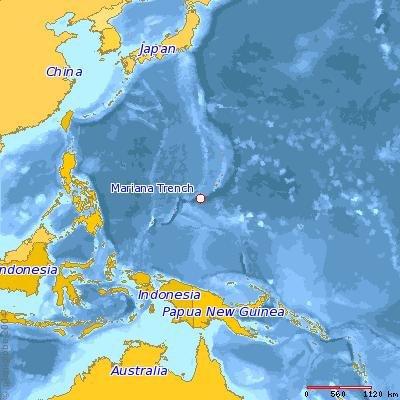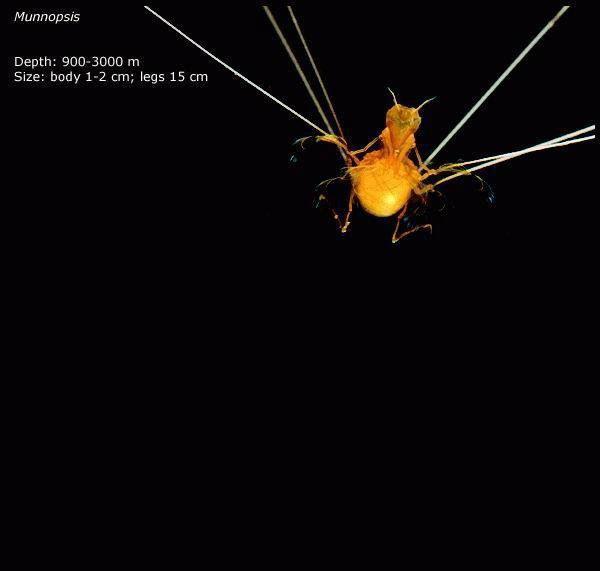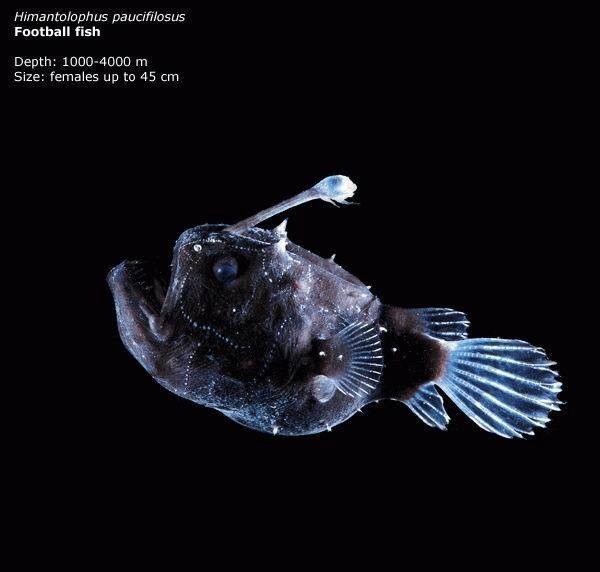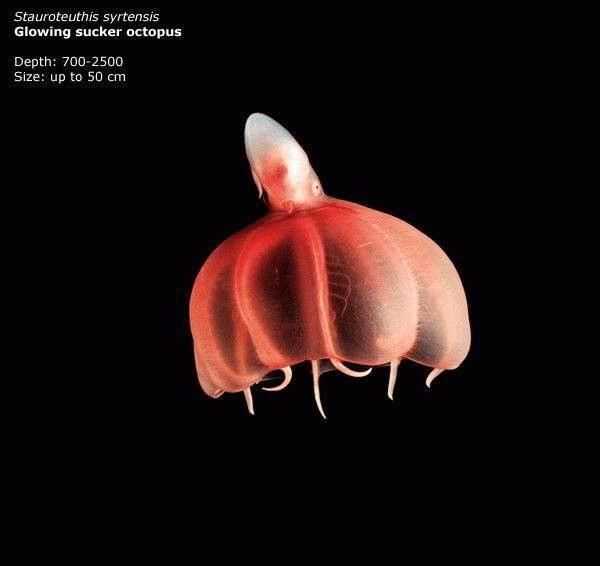The inhabitants of the Mariana Trench
 Bashny.Net
Bashny.Net
Mariana Trench, or the Mariana Trench - ocean basins in the western Pacific is the deepest known in the world of geographical objects


Trough stretches along the Marianas 1500 km; it has a V-shaped profile, the steep (7-9 °) slopes, flat bottom width of 1-5 km, which is divided into several closed thresholds depressiy.U water pressure reaches the bottom 108 of 6 MPa, which is more than 1,100 times greater than normal
atmospheric pressure at sea level. Depression is on the border of two tectonic plates connections, in the area of movement along faults, where the Pacific plate goes under the Philippine plate.
Research Mariana Trench formed the British expedition ship "Challenger", conducted the first systematic measurements of the depths of the Pacific Ocean. This military three-masted corvette with sailing equipment has been rebuilt in oceanographic vessel for hydrological, geological, chemical, biological and meteorological work in 1872 is also a significant contribution to the study of the Mariana Trench was made by Soviet researchers. In 1958, an expedition of the "Vityaz" established the existence of life at depths greater than 7,000 m, thus disproving the perception in the time view of the impossibility of living at depths greater than 6000-7000 m. In 1960, it was held immersion bathyscaphe "Trieste" to the bottom Mariana Trench at a depth of 10,915 meters.

They can dwell on such a huge depth of living organisms and how they should look like, given that they crush the huge mass of ocean water pressure exceeds 1100 atmospheres? Difficulties associated with the study and comprehension of the creatures inhabiting these unimaginable depths enough, but human ingenuity knows no bounds. For a long time oceanographers considered madness hypothesis that at depths greater than 6,000 meters in impenetrable darkness under enormous pressure and at temperatures close to zero, there may be life. However, research scientists in the Pacific have shown that in these depths, far below the 6,000-meter mark, there is a huge colony of living organisms pogonophores ((rogonophora; from the Greek. Pogon - beard and phoros - bearing), a type of marine invertebrates inhabiting chitin in long, open at both ends of the tube). Recently the veil of secrecy lifted the manned and unmanned, made of heavy-duty materials, submersibles equipped with video cameras. As a result, it was discovered a rich community of animals, consisting of both famous and less familiar marine groups.
At depths of no sunlight, no algae, salinity constant, low temperature, the abundance of carbon dioxide, enormous hydrostatic pressure (increases by 1 atmosphere for every 10 meters). What fed the inhabitants of the abyss? Food sources of deep animals - bacteria, as well as rain "corpses" and organic detritus coming from the top; deep animals, or blind, or with very developed eyes, often telescopic; Many fish and cephalopods from fotoftorami; in other forms of light surface of the body or its parts. Therefore, the appearance of these animals just awful and incredible as the conditions in which they live. Among them - the fearsome worms 1.5 meters long, with no mouth and anus, mutant octopus, unusual starfish and some soft-bodied creatures two-meter length, which do not yet identified.


















Trough stretches along the Marianas 1500 km; it has a V-shaped profile, the steep (7-9 °) slopes, flat bottom width of 1-5 km, which is divided into several closed thresholds depressiy.U water pressure reaches the bottom 108 of 6 MPa, which is more than 1,100 times greater than normal
atmospheric pressure at sea level. Depression is on the border of two tectonic plates connections, in the area of movement along faults, where the Pacific plate goes under the Philippine plate.
Research Mariana Trench formed the British expedition ship "Challenger", conducted the first systematic measurements of the depths of the Pacific Ocean. This military three-masted corvette with sailing equipment has been rebuilt in oceanographic vessel for hydrological, geological, chemical, biological and meteorological work in 1872 is also a significant contribution to the study of the Mariana Trench was made by Soviet researchers. In 1958, an expedition of the "Vityaz" established the existence of life at depths greater than 7,000 m, thus disproving the perception in the time view of the impossibility of living at depths greater than 6000-7000 m. In 1960, it was held immersion bathyscaphe "Trieste" to the bottom Mariana Trench at a depth of 10,915 meters.

They can dwell on such a huge depth of living organisms and how they should look like, given that they crush the huge mass of ocean water pressure exceeds 1100 atmospheres? Difficulties associated with the study and comprehension of the creatures inhabiting these unimaginable depths enough, but human ingenuity knows no bounds. For a long time oceanographers considered madness hypothesis that at depths greater than 6,000 meters in impenetrable darkness under enormous pressure and at temperatures close to zero, there may be life. However, research scientists in the Pacific have shown that in these depths, far below the 6,000-meter mark, there is a huge colony of living organisms pogonophores ((rogonophora; from the Greek. Pogon - beard and phoros - bearing), a type of marine invertebrates inhabiting chitin in long, open at both ends of the tube). Recently the veil of secrecy lifted the manned and unmanned, made of heavy-duty materials, submersibles equipped with video cameras. As a result, it was discovered a rich community of animals, consisting of both famous and less familiar marine groups.
At depths of no sunlight, no algae, salinity constant, low temperature, the abundance of carbon dioxide, enormous hydrostatic pressure (increases by 1 atmosphere for every 10 meters). What fed the inhabitants of the abyss? Food sources of deep animals - bacteria, as well as rain "corpses" and organic detritus coming from the top; deep animals, or blind, or with very developed eyes, often telescopic; Many fish and cephalopods from fotoftorami; in other forms of light surface of the body or its parts. Therefore, the appearance of these animals just awful and incredible as the conditions in which they live. Among them - the fearsome worms 1.5 meters long, with no mouth and anus, mutant octopus, unusual starfish and some soft-bodied creatures two-meter length, which do not yet identified.
















Tags
See also
Mariana Trench (26 photos)
The deepest place on earth - the Mariana Trench
Mariana Trench
Mariana Trench - the deepest place in the world (21 photos)
Mariana Trench - "Bottom of the Earth."
Top Rated Places on Earth
The deepest point in the world (12 photos)
The space race (32 photos)
50 amazing facts about the Earth
A brief history of space exploration,
















